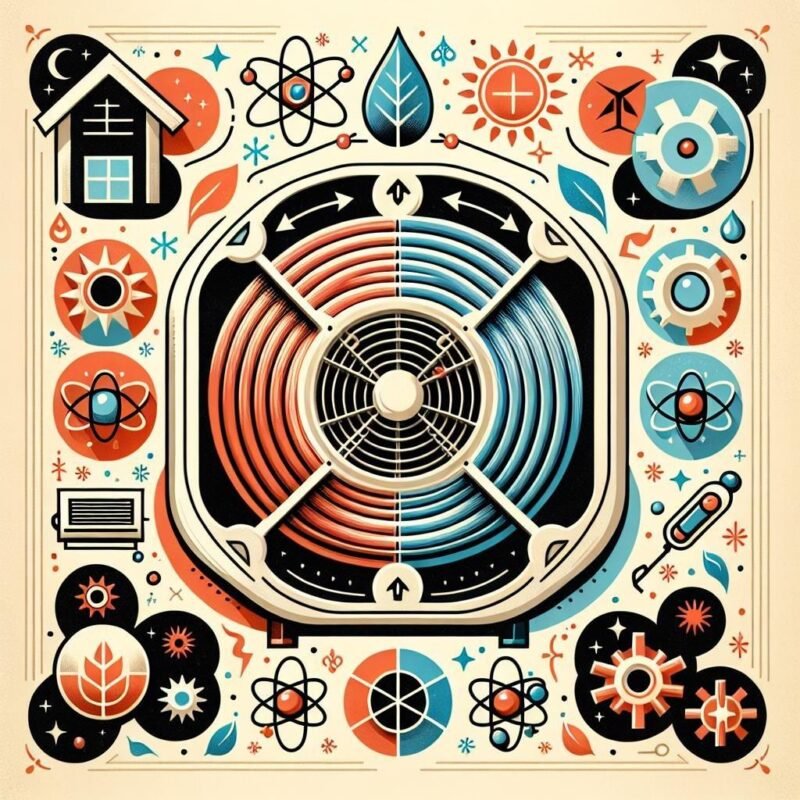Understanding SEER Ratings and Energy Efficiency in Mini Split AC Units

Picture this: you’re standing in front of a sleek mini split AC unit, feeling like you’re trying to decode ancient hieroglyphics as you stare at those mysterious SEER numbers. Don’t worry – you’re not alone in this air conditioning puzzle! As our planet gets warmer and energy bills keep climbing, understanding these ratings has become more crucial than ever. SEER ratings are like your ACS report card, telling you just how efficiently it’ll keep you cool while being kind to both your wallet and Mother Earth. So,let’s embark on a journey through the world of mini split efficiency,where we’ll turn those confusing numbers into your secret weapon for making smarter cooling choices.
Demystifying SEER Ratings: Your Mini Split AC’s Energy Score Explained
Ever wondered what those mysterious SEER numbers mean when shopping for your mini split system? Think of it as your AC’s report card - the higher the score, the better it performs! SEER (Seasonal Energy Efficiency Ratio) measures how efficiently your system converts electricity into cooling power throughout the season. A unit with a SEER rating of 20 will use half the energy of a system rated at 10 to produce the same cooling effect,putting more money back in your pocket.
Modern mini splits are leading the efficiency revolution with notable ratings that frequently enough surpass conventional systems. Here’s what makes them energy champions:
- Variable-speed technology adjusts output based on actual needs
- Inverter compressors minimize energy-wasting start-stop cycles
- Advanced refrigerant flow maximizes heat transfer efficiency
| SEER Rating | Efficiency Level | Energy Savings |
|---|---|---|
| 14-16 | Good | 30-40% |
| 17-20 | Better | 41-50% |
| 21+ | Best | 50%+ |
Maximizing Comfort While Minimizing bills: Smart Ways to Choose the right SEER Rating
Finding the sweet spot between comfort and cost requires a strategic approach to selecting your mini split’s SEER rating. Think of SEER ratings like fuel economy in cars - higher numbers mean better efficiency, but they also come with a steeper price tag upfront. For most homeowners in moderate climates, a SEER rating between 16 and 18 provides an excellent balance, delivering substantial energy savings without breaking the bank on initial costs. Consider your local climate, cooling demands, and utility rates to determine your ideal efficiency range.
Smart shoppers look beyond the numbers to evaluate their real-world savings potential. Here are key factors that influence your optimal SEER choice:
- Annual cooling hours in your region
- local electricity rates and seasonal fluctuations
- Home’s insulation quality and sun exposure
- Length of time you plan to stay in your home
| SEER Rating | Best For | ROI Timeline |
|---|---|---|
| 14-16 | Mild Climates | 2-3 Years |
| 17-20 | Hot Regions | 3-5 Years |
| 21+ | Extreme Heat | 5-7 Years |
Beyond the Numbers: How Seasonal Performance Impacts Your Mini Split’s Efficiency
while SEER ratings provide a standardized measure of efficiency, your mini split’s real-world performance fluctuates with the changing seasons. During peak summer months, when the system works overtime to combat high temperatures, you might notice slight variations in its efficiency. Factors like humidity levels,sun exposure,and even the shade from nearby trees can influence how hard your unit needs to work to maintain your desired indoor climate.
The secret to maximizing your mini split’s efficiency lies in adapting to these seasonal changes.Consider these essential adjustments throughout the year:
- Adjust your temperature settings based on outdoor conditions
- Clean or replace filters more frequently during high-pollen seasons
- use programmable schedules that align with seasonal daylight patterns
- Enable dehumidification mode during muggy summer months
| Season | Efficiency Focus | Key Action |
|---|---|---|
| Spring | Moderate | Filter maintenance |
| Summer | High | Cooling optimization |
| Fall | Moderate | System inspection |
| Winter | Variable | Heat mode adjustment |
Unlocking Energy Savings: Expert Tips for Selecting and Installing High SEER Mini Splits
Maximizing your cooling efficiency begins with smart selection strategies. Look for variable-speed compressors that adapt to your cooling needs, rather than the traditional on-off cycling. When browsing through options, focus on units with SEER ratings above 20 for optimal energy performance. consider factors beyond just the SEER number,such as:
- Room size and layout compatibility
- Climate zone requirements
- Solar exposure in installation area
- Local utility rate patterns
Perfect installation is crucial for peak performance.Strategic indoor unit placement helps maximize airflow while minimizing energy waste. Position outdoor units away from direct sunlight and ensure proper clearance for ventilation.A professional installation might cost more initially,but it pays dividends through:
| Benefit | Impact |
|---|---|
| Optimal Efficiency | 15-25% better performance |
| System Longevity | 3-5 years extended lifespan |
| Energy Savings | up to 40% reduction |
Q&A
Understanding SEER Ratings and energy Efficiency in Mini Split AC Units: Your kind Q&A
Q1: What does SEER stand for,and why should I care about it?
A1: Great question! SEER stands for Seasonal Energy Efficiency Ratio. It’s a measurement that tells you how efficiently an air conditioning system cools your space over a typical cooling season. The higher the SEER rating, the more efficient the unit is. Why should you care? Well, a higher SEER rating can mean lower energy bills, which is music to anyone’s ears!
Q2: What’s a good SEER rating for mini split AC units?
A2: generally, a SEER rating of 16 or higher is considered excellent for mini split systems. You might even find options that go up to 24 or more! Investing in a unit with a higher rating can save you more over time, especially during those hot summer months when your AC is working overtime.
Q3: Are mini split systems really more energy-efficient than traditional AC units?
A3: Absolutely! Mini split AC units are like the superheroes of the cooling world. They don’t require extensive ductwork, which means less energy lost.Plus, they operate using inverter technology, which allows them to adjust the compressor speed according to the cooling demand, resulting in less energy consumption overall. It’s cooling, made smarter!
Q4: How can I choose a mini split system with the right SEER rating for my needs?
A4: It’s all about matching the unit to your space! First, consider the size of the area you want to cool.Larger spaces might require a higher SEER rating to ensure efficiency. Also, think about your climate. If you live in a region with long, hot summers, investing in a higher SEER unit can pay off in spades. Lastly, get professional advice-they can definitely help you find the perfect match!
Q5: Are there any additional benefits to a higher SEER rating beyond energy savings?
A5: Definitely! Higher SEER units frequently enough come with better technology and features, like enhanced filtration systems, quieter operation, and even smart home compatibility. Plus, many high-efficiency units tend to have longer lifespans and may qualify you for local rebates or tax incentives. It’s like a bonus round!
Q6: Can I maintain my mini split AC unit myself to keep its efficiency up?
A6: you bet! Regular maintenance goes a long way. Start with simple tasks like cleaning the filters monthly and keeping the outdoor unit free from debris. It’s also a good idea to schedule a professional tune-up at least once a year. taking these steps will help ensure your unit runs efficiently and keeps you cool for years to come.
Q7: Is there anything else I should know about SEER ratings and mini splits?
A7: Just remember: while a high SEER rating is fantastic, it’s only one part of the puzzle. Size, installation quality, and maintenance all play crucial roles in your system’s efficiency.So do a little homework, consult the pros, and you’ll be set to enjoy a perfectly climate-controlled home!
—
Now you’re better equipped to navigate the world of mini split AC units and SEER ratings! whether you’re replacing an old system or installing a new one, this knowledge will help you make the best decision for your comfort and savings. Stay cool, friends!
The Conclusion
As we wrap up our journey through the world of SEER ratings and energy efficiency in mini-split AC units, it’s clear that knowledge is your coolest ally in beating the heat. By understanding these ratings, you’re not just making informed decisions for your comfort but also embracing a lifestyle that champions sustainability and savings.
So, the next time you’re browsing for an AC unit, remember: Every degree counts, and so do those SEER ratings! With the right choice, you can enjoy a refreshing breeze while knowing you’re on a path towards energy efficiency and lower bills. Here’s to creating a cozy, pleasant home that’s also kind to our planet. Stay cool, stay informed, and until next time, take care of your home-and yourself!






















